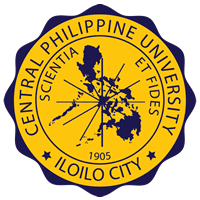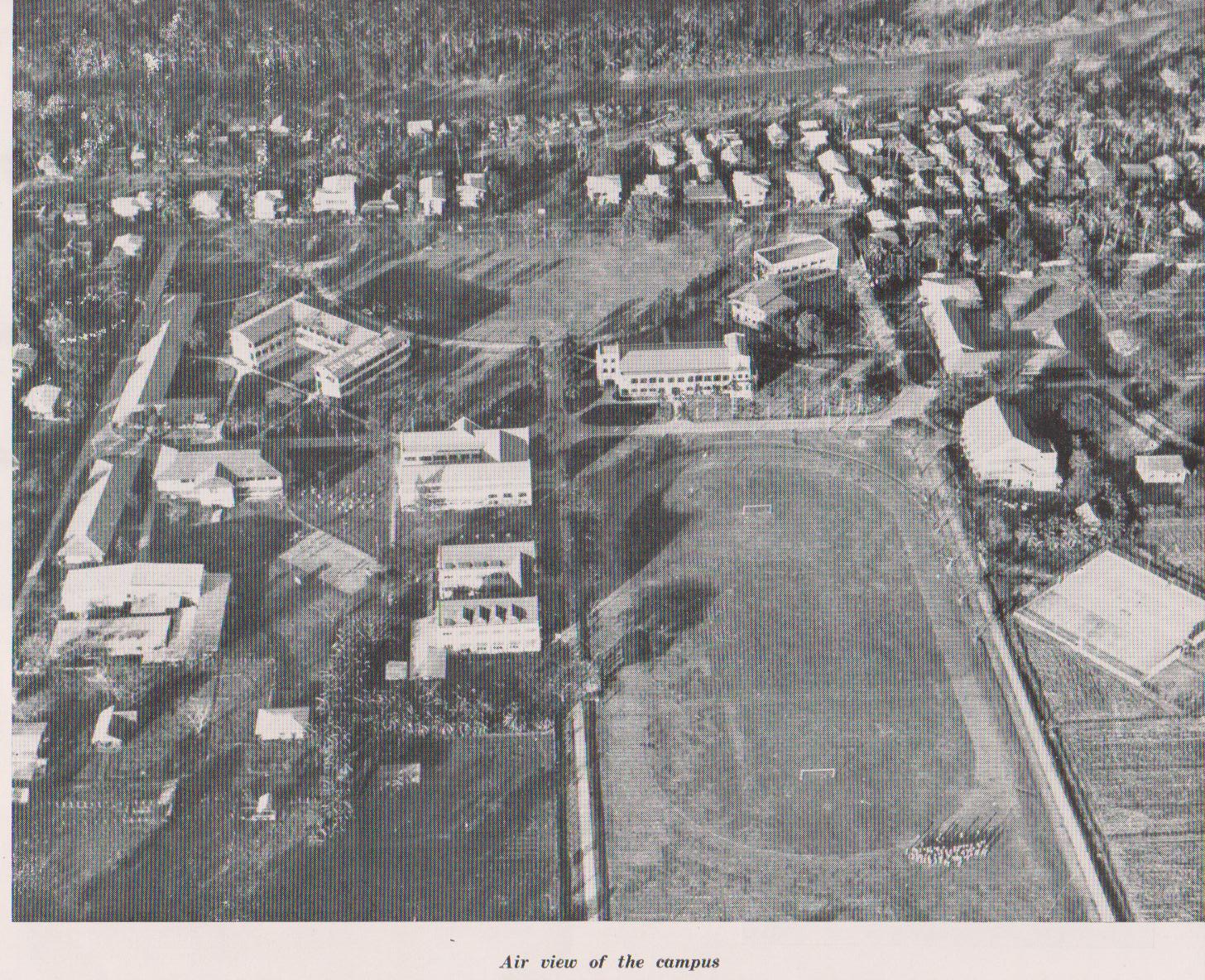By Francis Neil G. Jalando-on
An air view of the CPU campus in 1960.
In 1901, the American Baptist Foreign Mission Society received a $2,000 grant from John D. Rockefeller, an American industrialist, and a devoted American Baptist to establish a school in the Philippines. In 1904, the American Baptist missionaries bought the 24-hectare land from various owners with a total amount of $4,500 or a peso equivalent during that time of P9,000. The missionaries bought it from the following persons and families: Captain Vidal Javelona, Sinforoso Hinolan, Simon Ledesma, Pedro Jinon, Lopez family, Mirasol family, Habana family and Salazar family. The American Baptist missionaries chose the location because of the following advantages: it was near a navigable river, near the railroad, and near the main road.
Interestingly, the campus was one of the battlegrounds during the Filipino-American War in Iloilo. A lot of people were killed in the land itself because of the “Battle of Sambag” on March 14, 1899. Both Filipinos and Americans died in the area. When the campus was bought, there were two large buildings in the area. One was a distillery ran by a Chinese that manufactured an alcoholic drink from fermented molasses called “Tanduay.” The other one was a one-man mill that produced muscovado sugar, and a storage area for sugar. Most of the land area in the campus were planted by sugar cane.
A Bible School for women was established in 1904 through the leadership of Anna V. Johnson. This later became the Baptist Missionary Training School (BMTS), the forerunner of the CPU College of Theology.
In June 1905, the Bible School for men was also opened in the campus. A few months later, on October 1, 1905, another school was opened—the Jaro Industrial School. The Philippine Baptist mission commissioned Rev. Dr. William O. Valentine, a pastor and teacher, to head both schools.
Another interesting thing happened to the campus in 1935 when the Convention of Philippine Baptist Churches was established. According to the page 45 of the book Scientia et Fides The Story of Central Philippine University by Nelson and Herradura, it should be noted that the “Convention, in place of the Philippine Baptist Mission, was now recognized as the national field body by the Foreign Mission Society…Consequently, the campus of the college was leased to the Convention as the field body for its oversight. All requests by the college for appropriations, missionary personnel, and other related needs had to be coursed through the Convention Board of Trustees, to the Society. Furthermore, proposed changes in the constitution of the college or its by-laws must be ratified by the Convention in session before they could be enforced.”
During World War II, devastation happened to the campus. According to a report, “All buildings and equipment were levelled to the ground or reduced to ashes, except for six modern concrete structures, shells of which remain standing either lightly or badly damaged. They are: Valentine Hall (administration and classrooms), Lopez Hall (mess hall for boys), Franklin Hall (boy’s dormitory), Roblee Hall (Science building), Weston Hall (girl’s dormitory), and the President’s House. Words cannot describe the extent of the damage done. All that can be said is that the destruction is TOTAL in capital letters.”
The reconstruction effort was done and made ready for classes to start on July 1946. All the buildings were reconstructed, and some had additional features. Prof. Juan Sornito, the lead engineer, worked closely together with Comptroller Caipang and Meliton Sornito as foreman. The Chairman of the Board of Trustees, Don Ramon Lopez, was tasked to oversee the overall reconstruction effort.
Soon after Central Philippine College became Central Philippine University on April 1, 1953, a serious discussion on the relationships between American Baptist Foreign Mission Society and the Convention of Philippine Baptist Churches followed. At the meeting of the CPU Board of Trustees on March 24, 1966, the Tripartite Agreement that defined the relationship of CPU, ABFMS and CPBC were discussed. The relationships were defined. It was duly signed and was sent to ABFMS. One of the important documents that was signed as the Lease Agreement between CPBC and CPU. CPBC leased the 24-hectare campus to CPU for one-peso a year.
On Christmas Day, December 25, 1969, the entire university property – land, buildings and equipment – was turned over by the American Baptist Foreign Mission Society to Central Philippine University. One of the conditions was to make “safeguards against CPU ever becoming non-church related.”
Now, the 24-hectare campus of Central Philippine University continues to serve the more than 15,000 students and more than 700 faculty and staff. God has blest the campus in the last 118 years, and we continue to pray that more lives will experience EXCEL in the years to come.
References:
Linnea A. Nelson and Elma S. Herradura, Scientia et Fides The Story of Central Philippine University, 1991, pp. 1, 4, 45, 256.
The Central Echo, April 1946.

